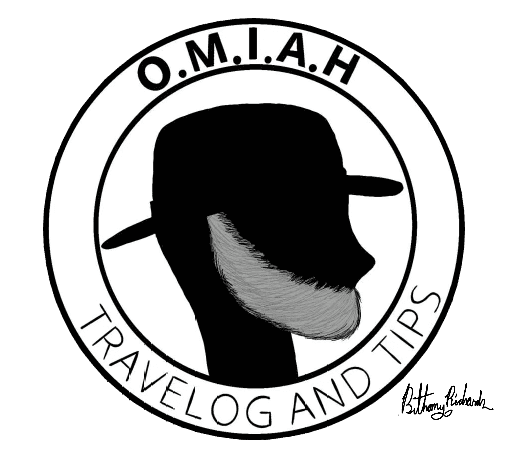Nuremburg, capital of the Franconia region of Bavaria is a city with a long and tumultuous history. Nuremburg is a city well worth the visit and offers a great stop when traveling on your way to Munich from either Berlin, or Frankfurt.
The history of the city really begins around 1030 when the imperial castle was built. The castle predates the city by a couple of centuries as Nuremberg itself was established as an imperial city in 1219. Historically, the city has served as an imperial host for during the Holy Roman Empire. It was ravaged during the black plague of the 1400’s. In the 20th century, Nuremberg was wrapped into the tragedy of the Nazi period, serving as the home of the Nazi propaganda, work camps, ultimately the trials of the Nazi leadership for their crimes against humanity.
The city has a string of tunnels under it that you can tour. The tunnels have a history for storing resources, including beer and wine barrels, but in WWII they served a greater purpose. The Nazi’s stored a lot of art, museum pieces and other relics of antiquity in them as protection from the bombing raids.
Nuremburg is known for its spectacular Christmas Market, often regarded as one of the biggest and best in Germany. Definitely on my bucket list.
Today, Nuremburg is a vibrant city of about a half a million people. The old town still maintains the remnants of its middle age heritage with portions of the city walls, and gates, intact. The imperial castle sitting high on the hill serves as a reminder of the city’s history and cultural importance.
The Imperial castle (Kaiserburg)
Bavarian Palace Administration | Imperial Castle of Nuremberg | History (kaiserburg-nuernberg.de)
The Imperial Castle is a must visit. The entrance fee is 5.50 Euro, and 2 Euro if you want to rent the audio guide.
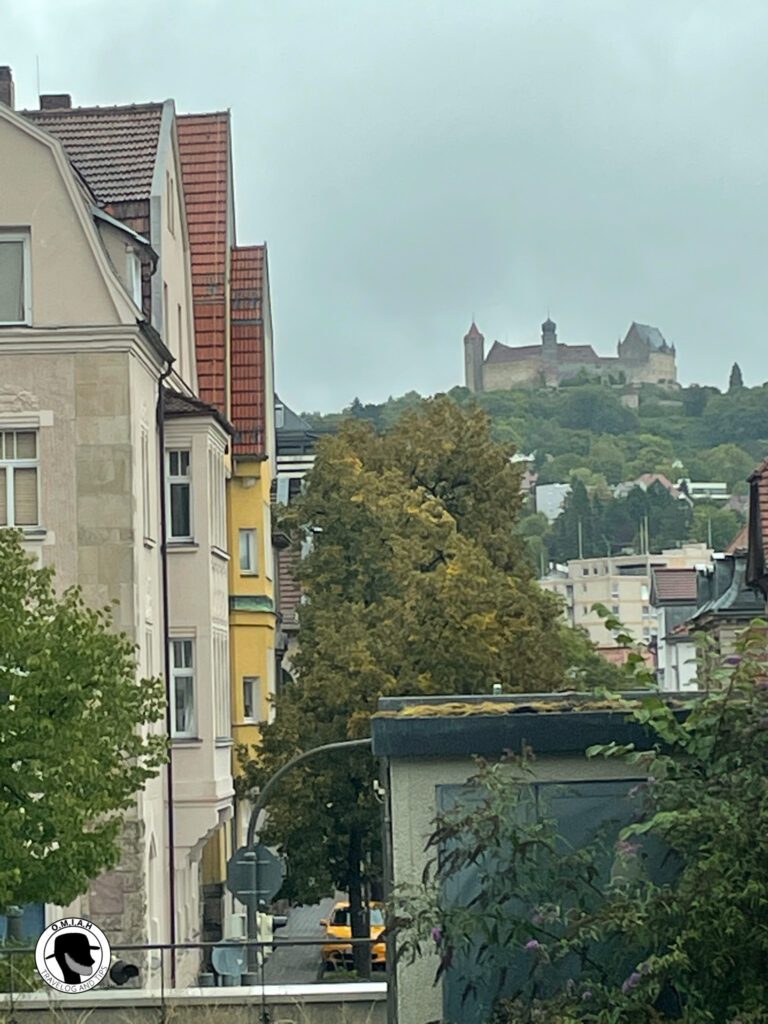
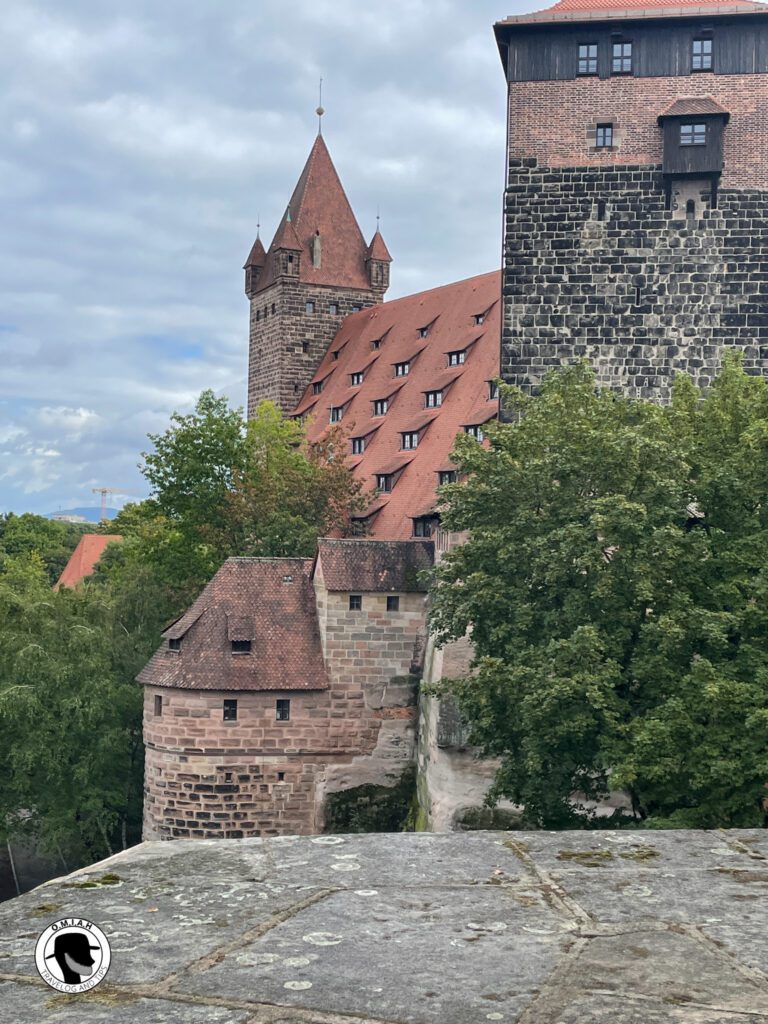
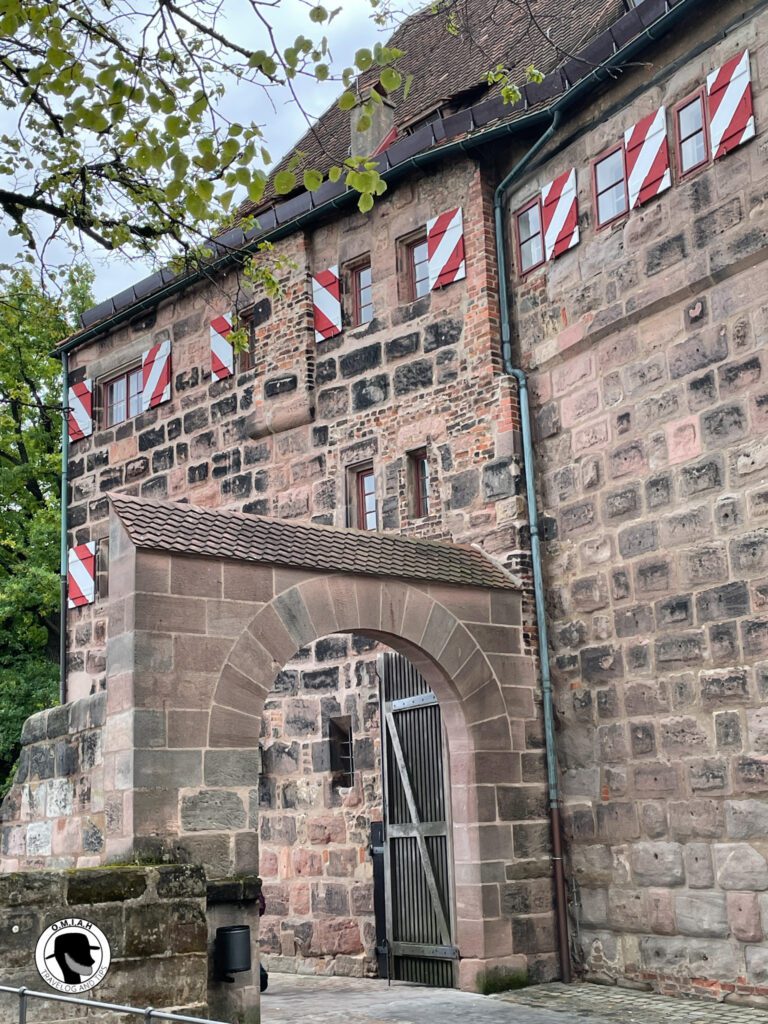
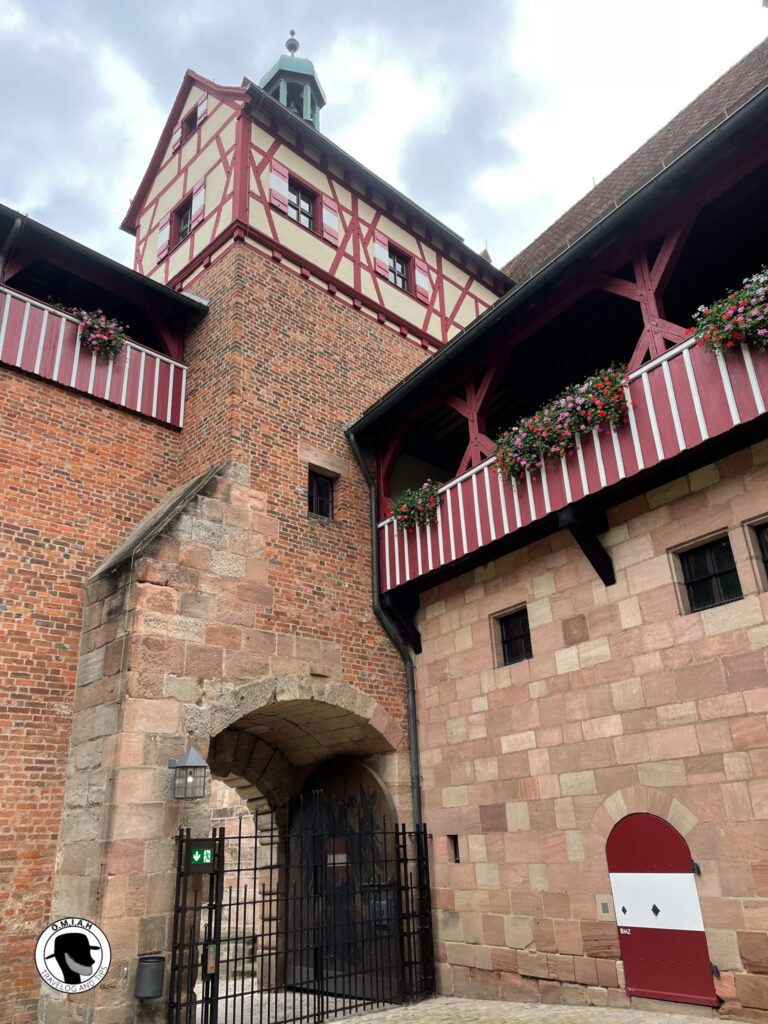
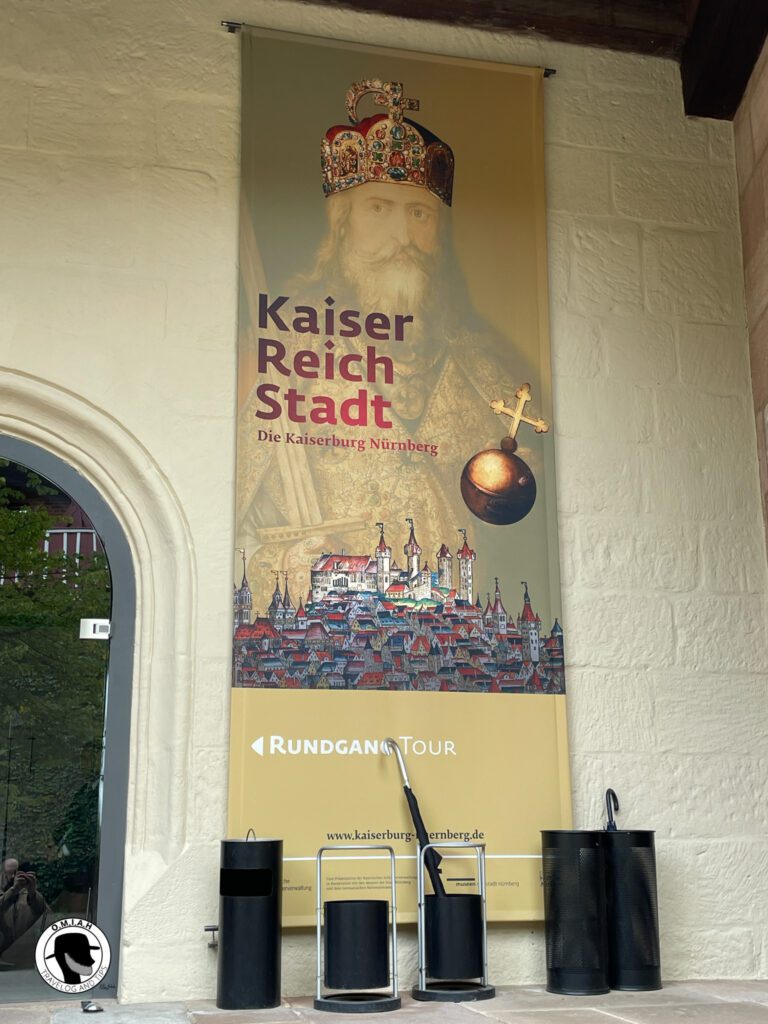
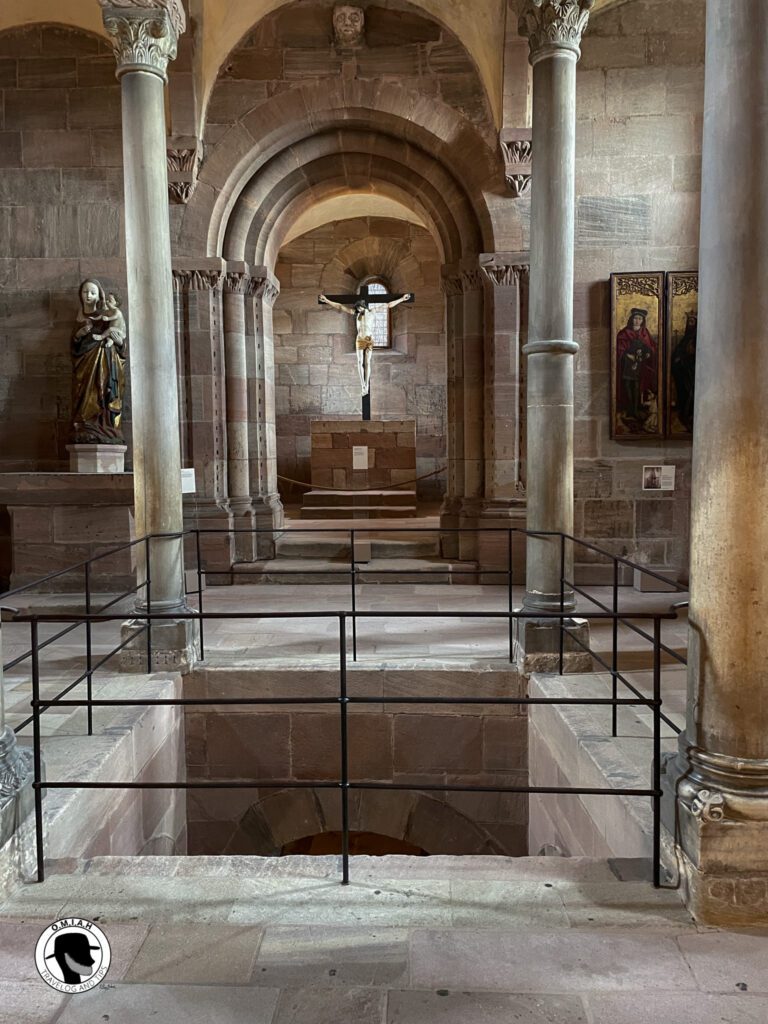
The castle was heavily damaged during WWII. The city rebuilt the castle to the original design. Despite its grandeur, it never was a permanent home for the emperor. Rather, it served as a middle age, five-star B&B for the emperor and his entourage as they rotated through the empire holding court.
There guided tours offered, but it’s also possible to do it as a self-guided tour, if you want to take things at your own pace.
The Imperial Hall is a great room for making the most of your time. In addition to the rich decor of the room, and the emperor’s tchotchkes (scepter and royal apple), there are digital kiosk for you to learn the history of the castle and the city.


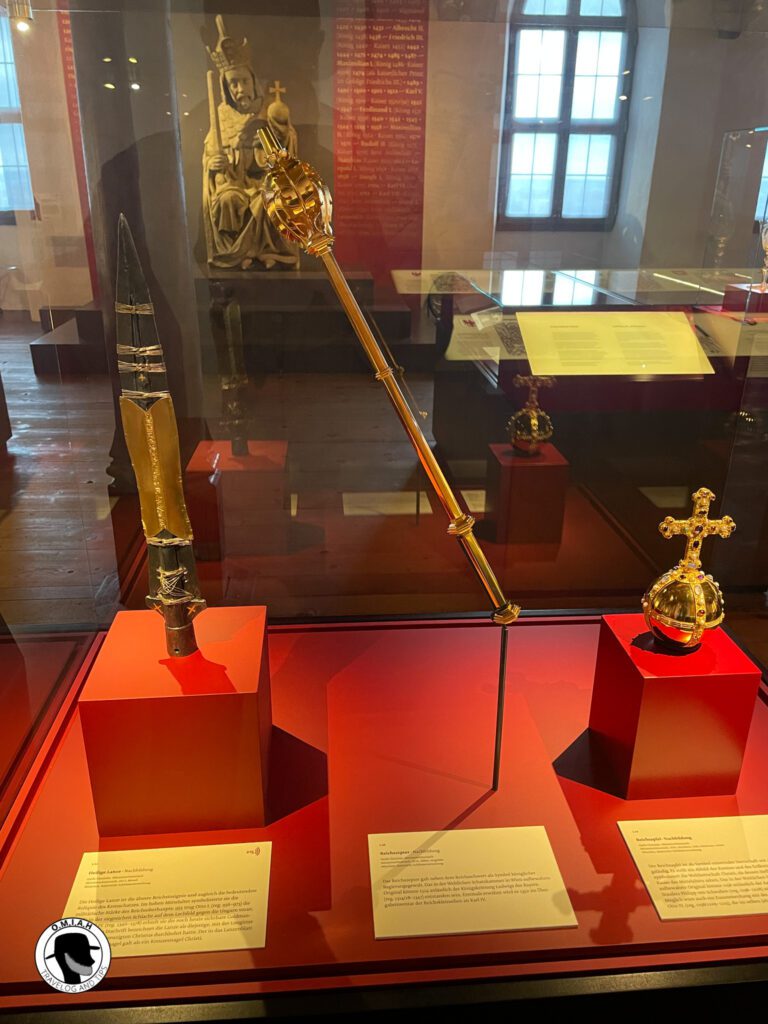
The castle has great exhibits of the Imperial living and entertainment rooms, but also has a wonderful collection of armor and weapons. The weapons include functional and ceremonial swords, pikes, and halberds. The collection also has an evolution of firing weapons from bows and arrows to crossbows to firearms.
Walking the grounds is also an interesting experience, with two other great attractions you don’t want to miss; the deep well and the Sinwell tower. To go into these attractions is another fee of 3.50 Euros.
The deep well is a building with a well in the middle of it. This may not sound like anything special, but the presentation really paints the picture. Given it dates back to the 14th Century, it’s amazing to understand the effort it took to dig down over 50 meters into the hard rock to ensure the castle had fresh water. Critical for the days of siege.
The diggers would sit on platforms as the dug out the well and then set a new platform as they went down into the rock. The tour guide pours a pitcher of water down the well to give a perspective of how deep the well is in the time it took the water to hit the pool at the bottom.
The Sinwell Tower, built in the latter part of the 13th century, is one of the buildings in the castle complex to survive the WWII bombings. The tower provides a 360-degree view, allowing you a bird’s perspective of the city.
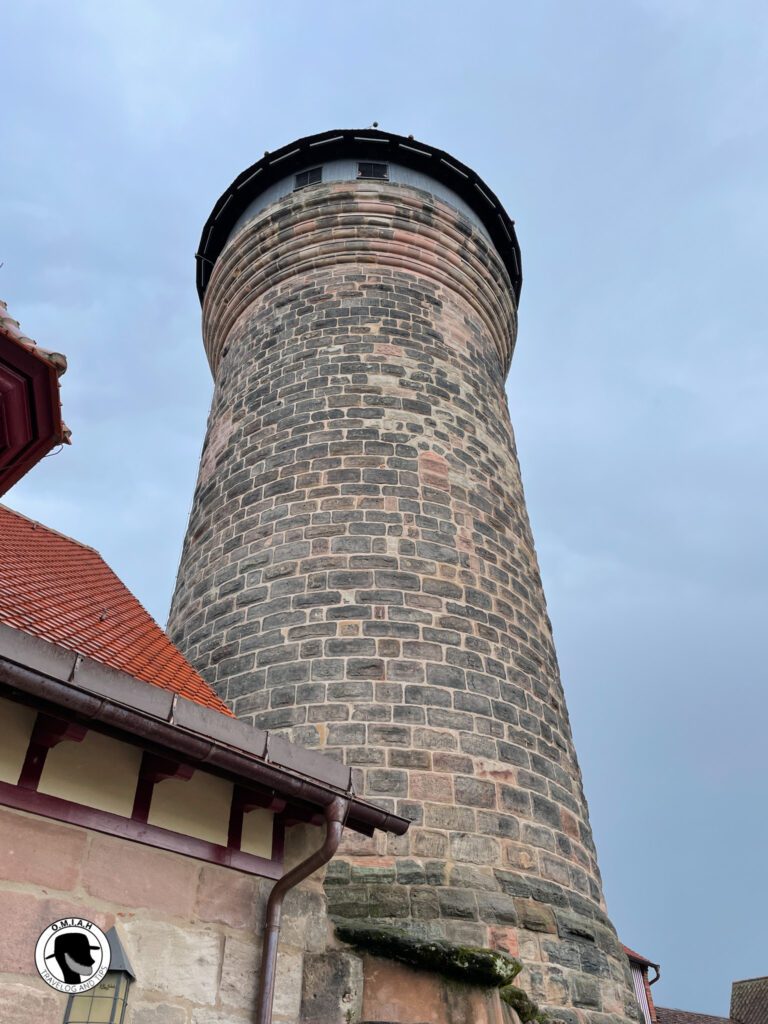
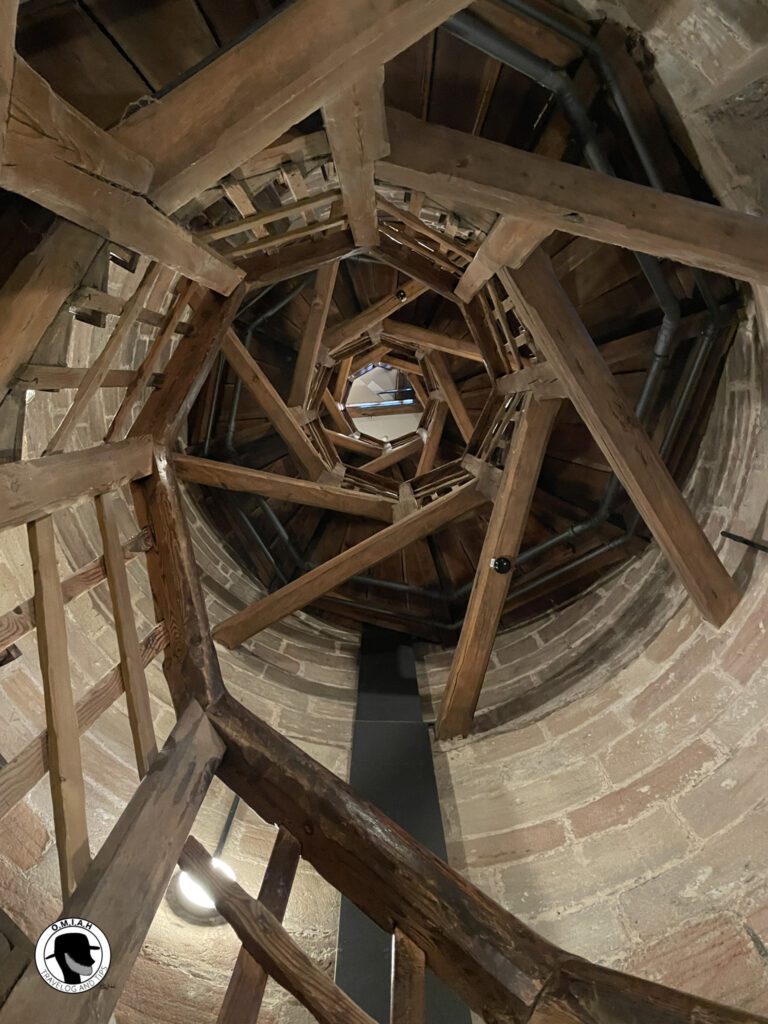

Dürer Haus
Albrecht-Dürer-Haus (nuernberg.de)
So, Albrecht Dürer is my favorite artist. I thank Herr Marzolf, my high school German teacher for the introduction. I admit, I failed drawing stick figures, and my only artistic skill is to appreciate the capabilities of others. Dürer was incredibly talented and worked in oils, wood carvings and metal etchings. Dürer was also a son of Nuremberg and bought a house just outside of the walls of the castle grounds. The Dürer Haus is a great little museum of the artist’s life, more so than his work. It’s also a time capsule of period house.
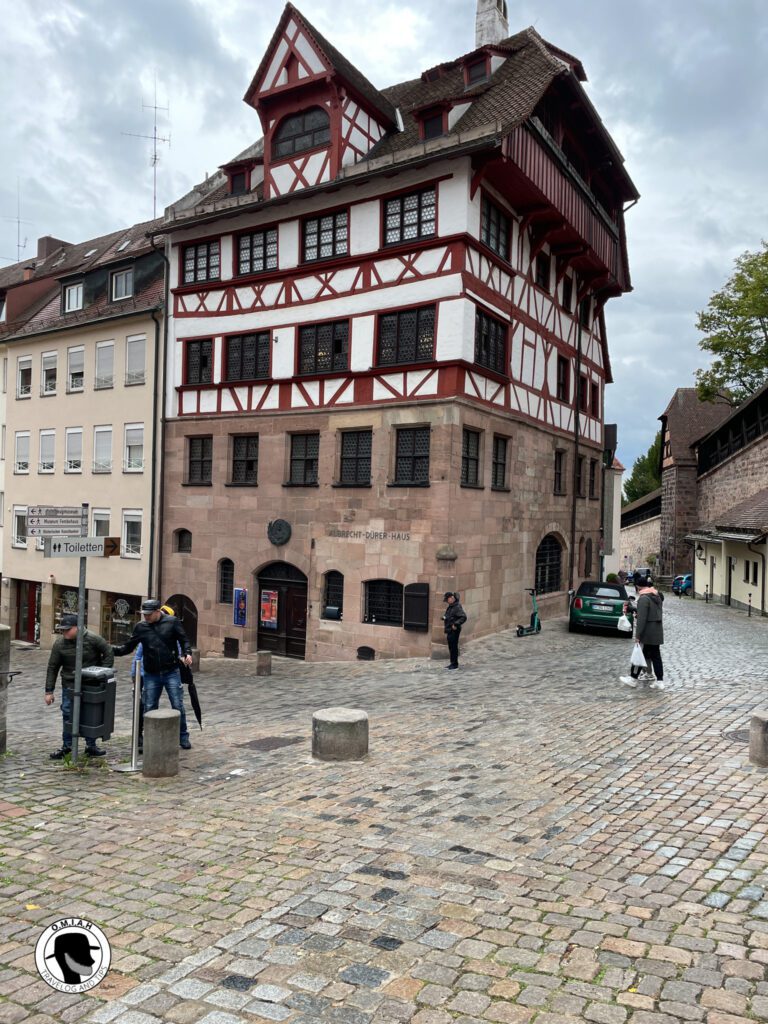
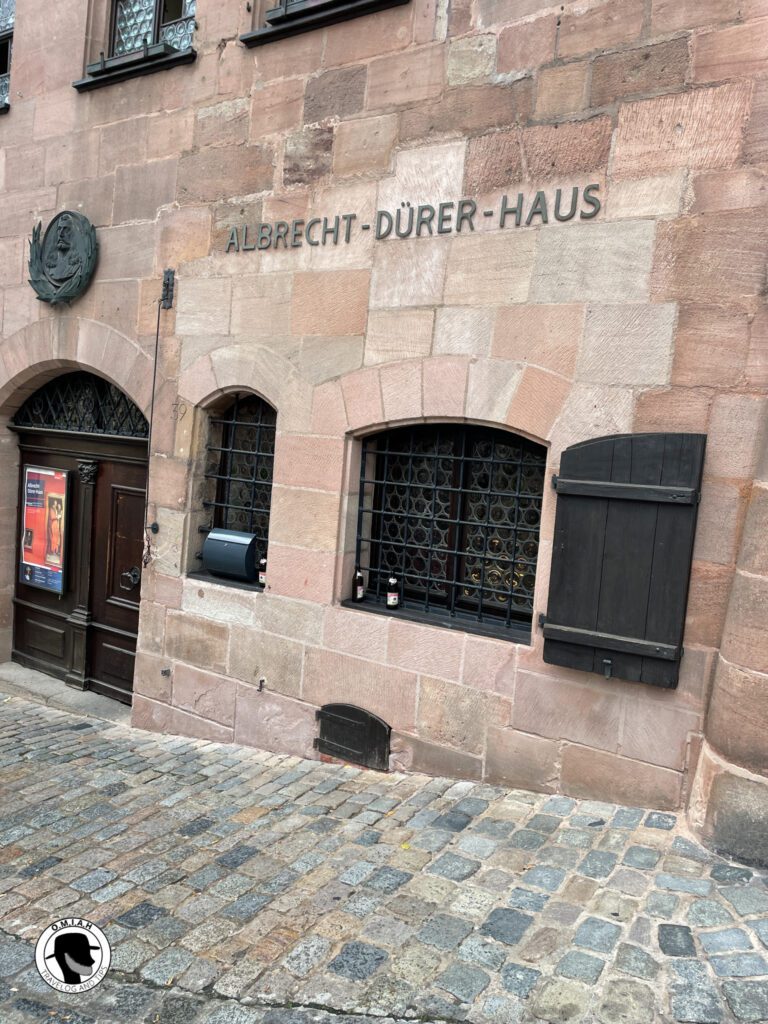

Altstadt
As with most German cities, Nuremberg has a wonderful Aldstadt, which is German for the old city. In all cases, the Altstadt is in the center of town, and the modern city surrounds it.
Nuremburg maintains several gates and the city walls. Directly across from the train station is the Frauentor. The Frauentor is an imposing sandstone tower. The handwerkerhof sits just inside the gate. This court is a neat little string of stands of craft workers and artisans. There are also a couple of restaurants.
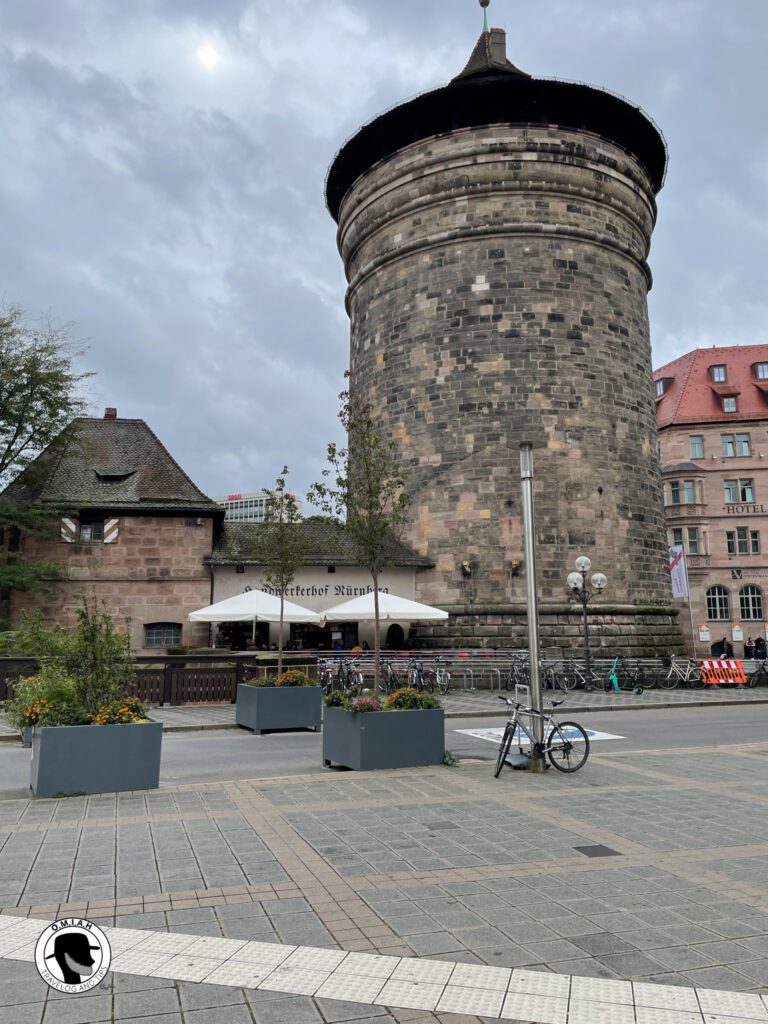
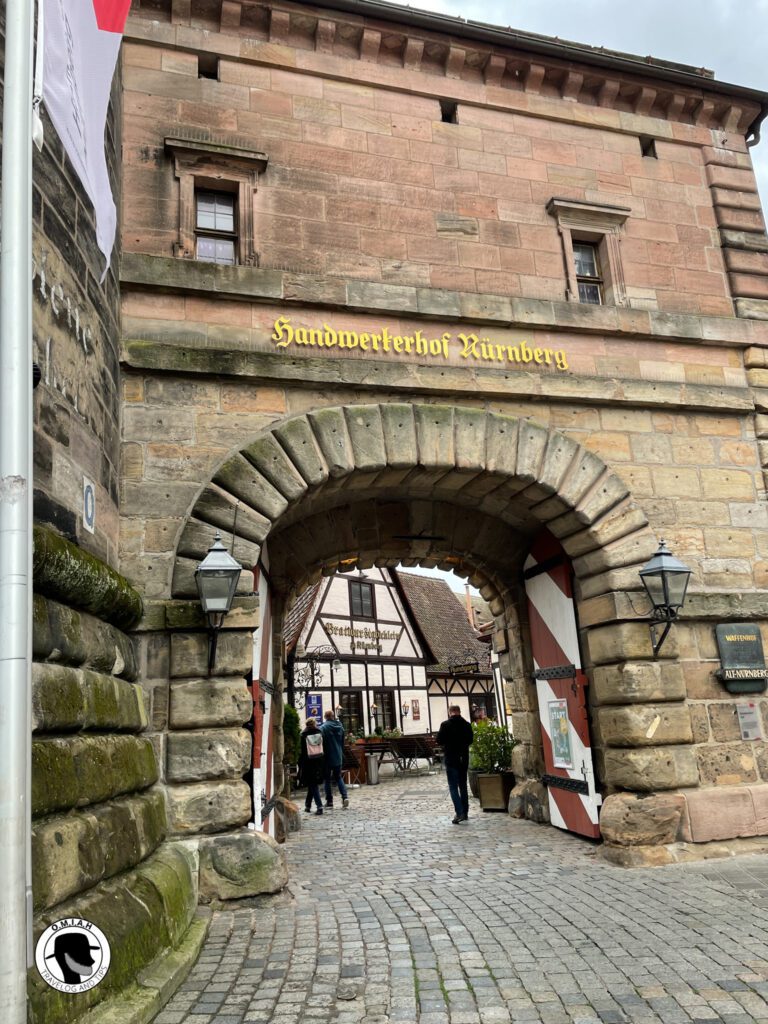

The Hauptmarkt section of the Altstadt hosts an open-air market with stands selling food, kitchen gadgets, clothes etc. Aside from the beautiful architecture surrounding the market square you can also find the Schönebrünnen(a.k.a. the beautiful fountain)
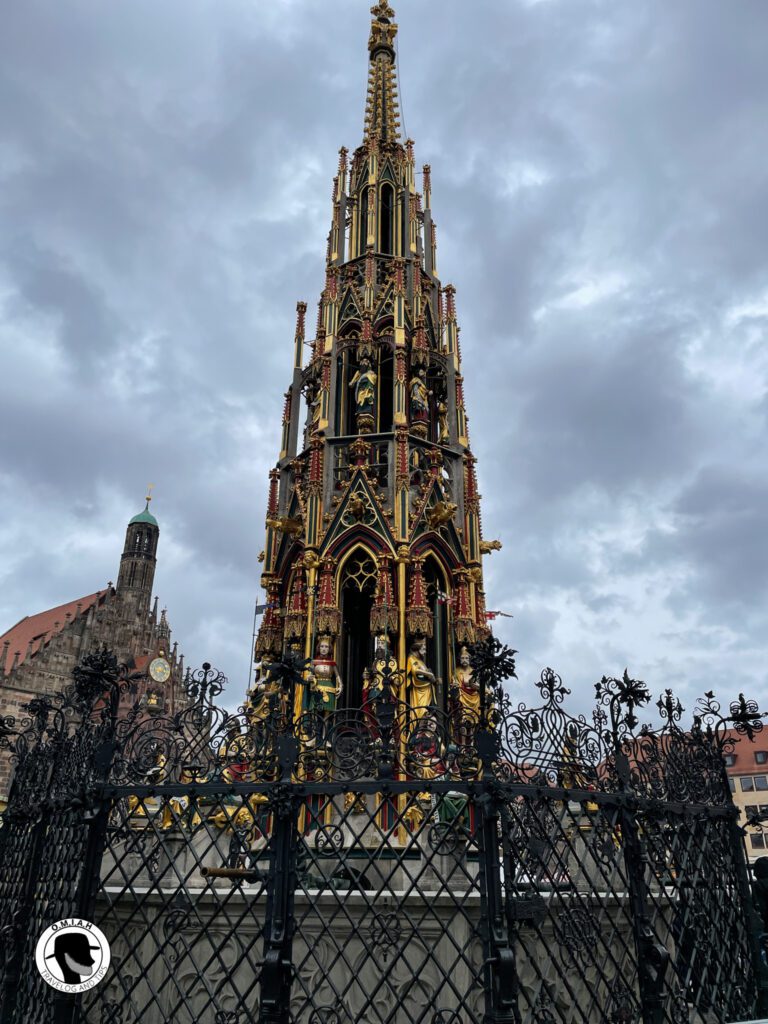

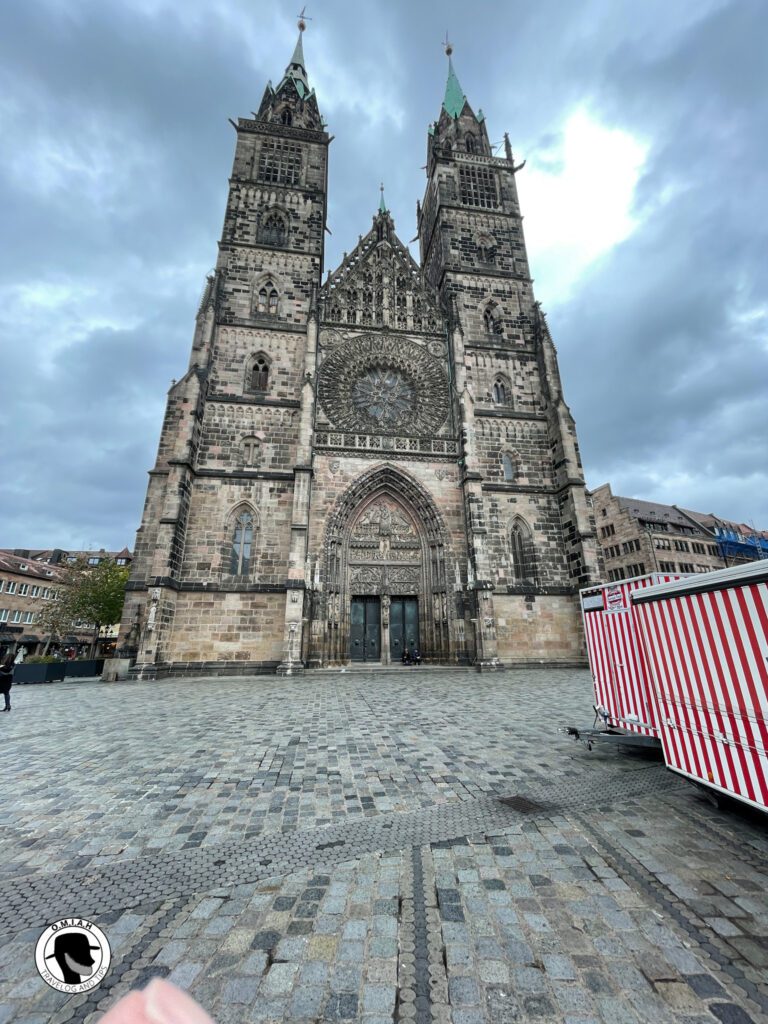
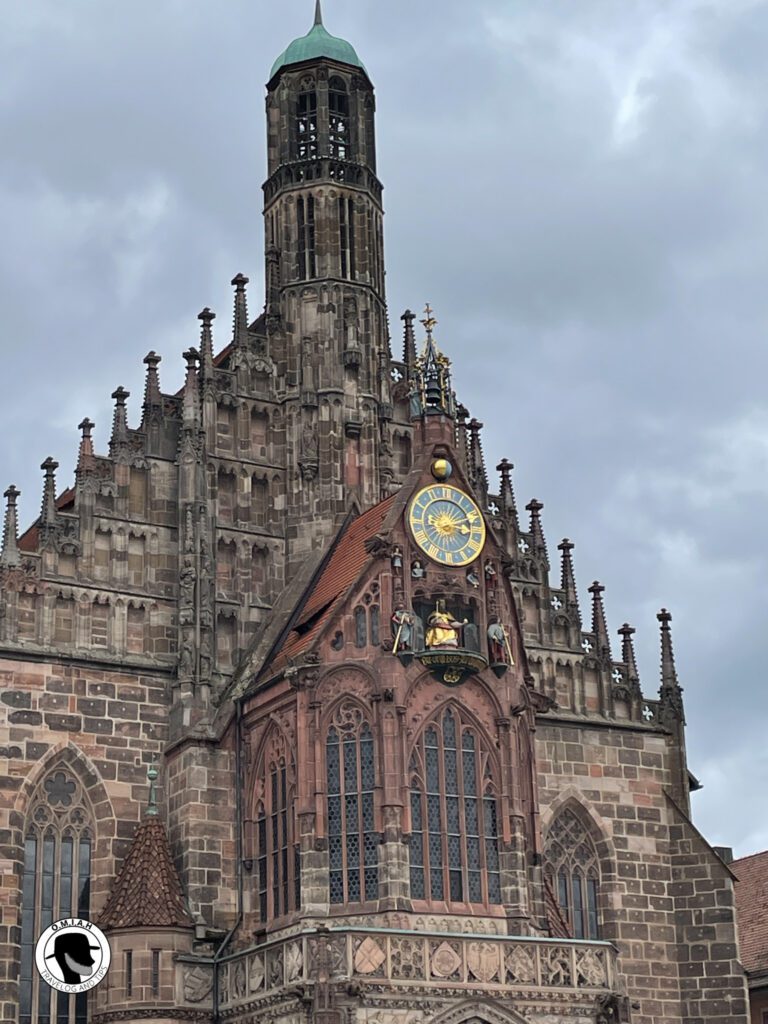
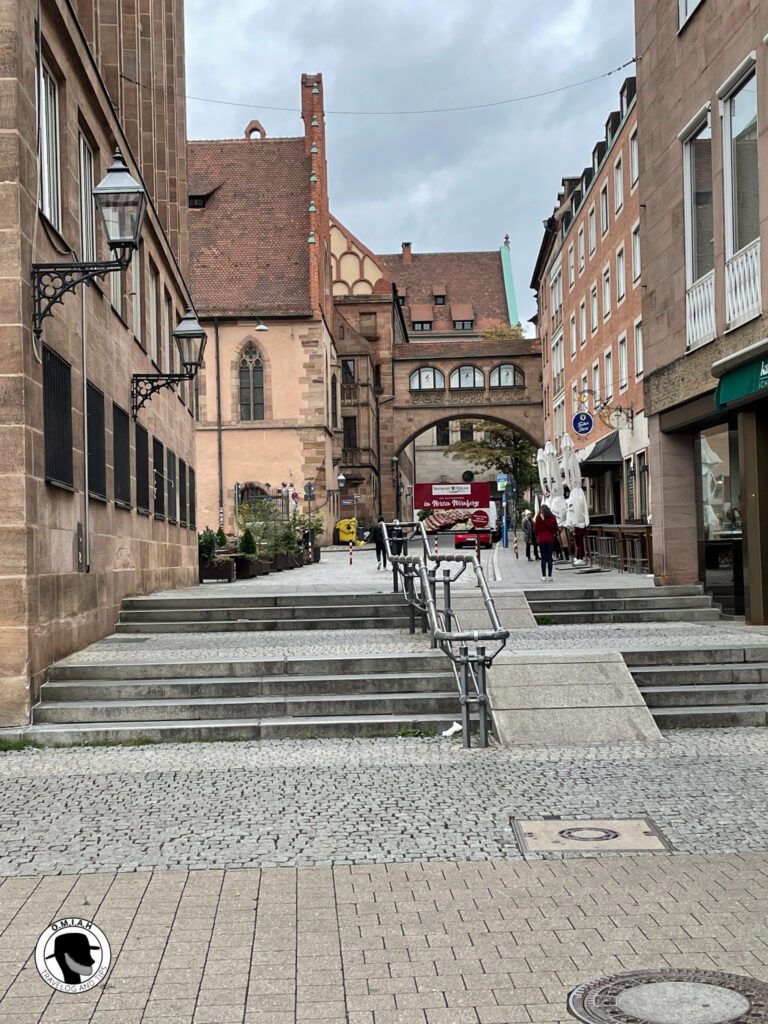
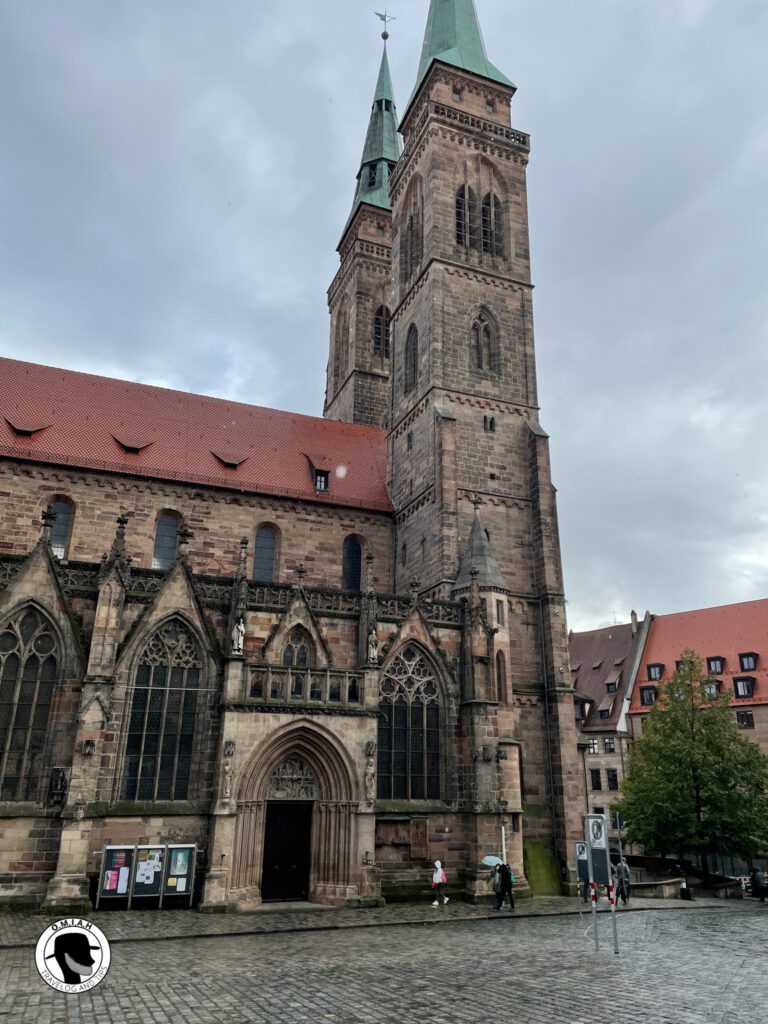
The Haupmarkt hosts an open-air market with stands selling food, kitchen gadgets, clothes etc.
Since I brought up food, a quick diversion on the topic. Nuremburg is famous for two delicacies: Lebkuchen (gingerbread) and Nuremberg bratwurst. Both are scrumptious, but the bratwurst is worth elaborating on. Most think of German Bratwurst as being a bigger sausage, at some festivals you can buy one that’s a meter long. Nuremburg brats are different. The sausages themselves are about the size of a breakfast sausage link in the US. In Nuremburg, they grill them up and put three on a roll. Add mustard and you have a little bit of heaven on a bun.
I usually don’t speak on restaurants but want to make an exception. After a trip loaded with schnitzel, sauerbraten and wurst, the pallet needs something different. There is an excellent Japanese restaurant, called Monki, located on Königstrasse in the Altstadt. This is a Japanese ramen house and their Tonkatsu Ramen was spectacular. Costs are reasonable, though you will need a reservation. Note, it’s not that they are a hoity-toity, white tablecloth restaurant, just popular and reservations are more commonplace than in the US. If you like ramen, I highly recommend you give it a shot.
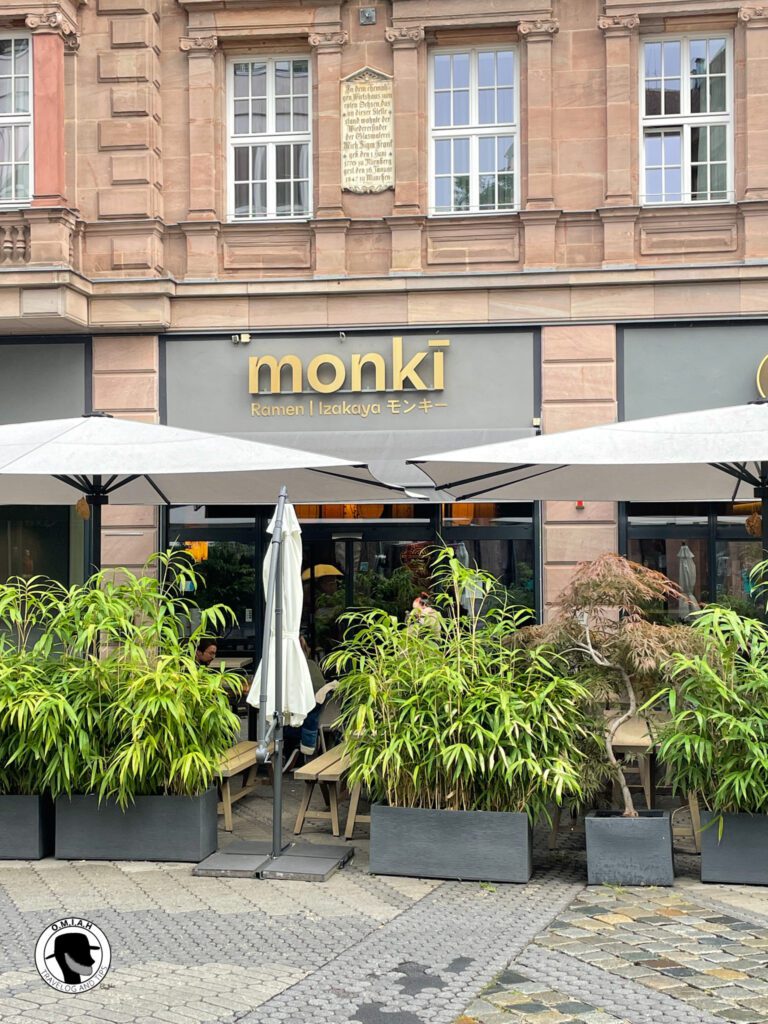
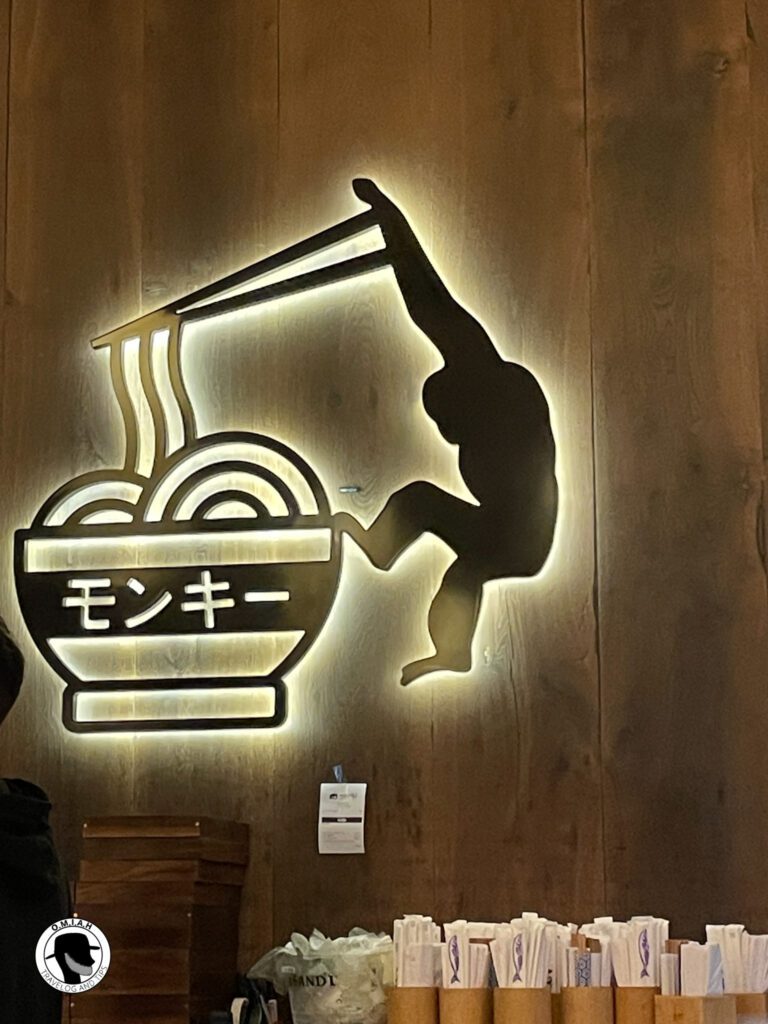
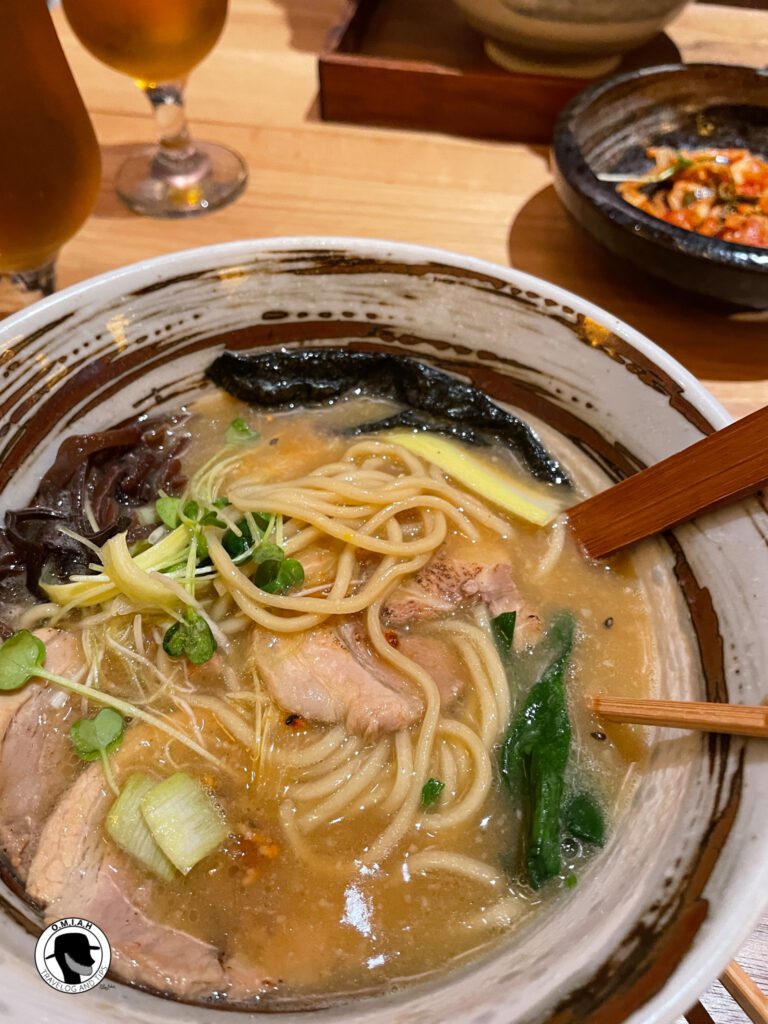
Documentation center
Germany has authorized several cities to house museums that cover the Nazi period. The country wants to ensure that what led up to, and the results of, this period can be effectively explained to prevent it from ever happening again. The Documentation Center was under refurbishment while we were there, but a temporary exhibit was available. It is a short walk around the lake to Zeppelin Field where the large Nazi party rallies were held.

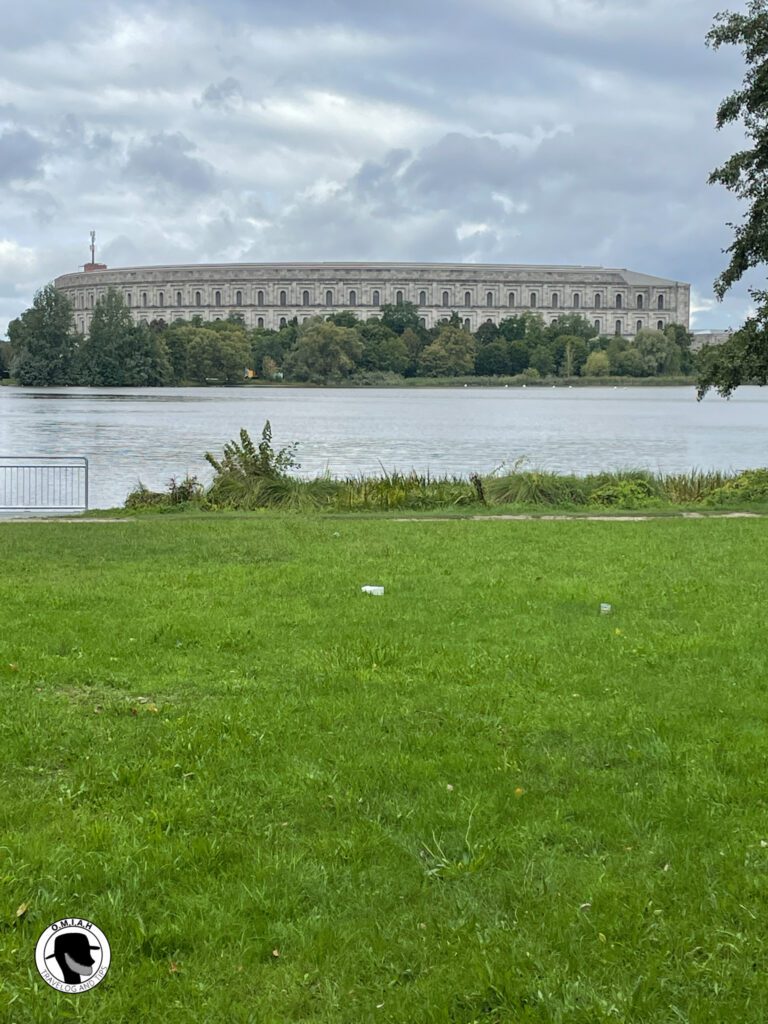
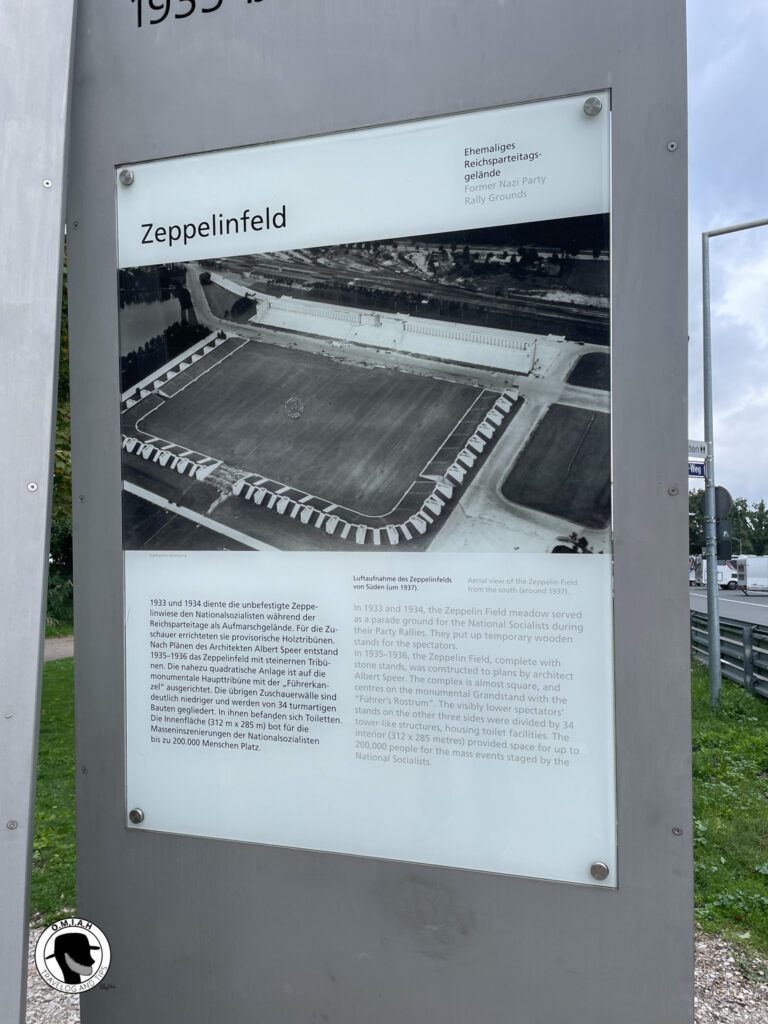

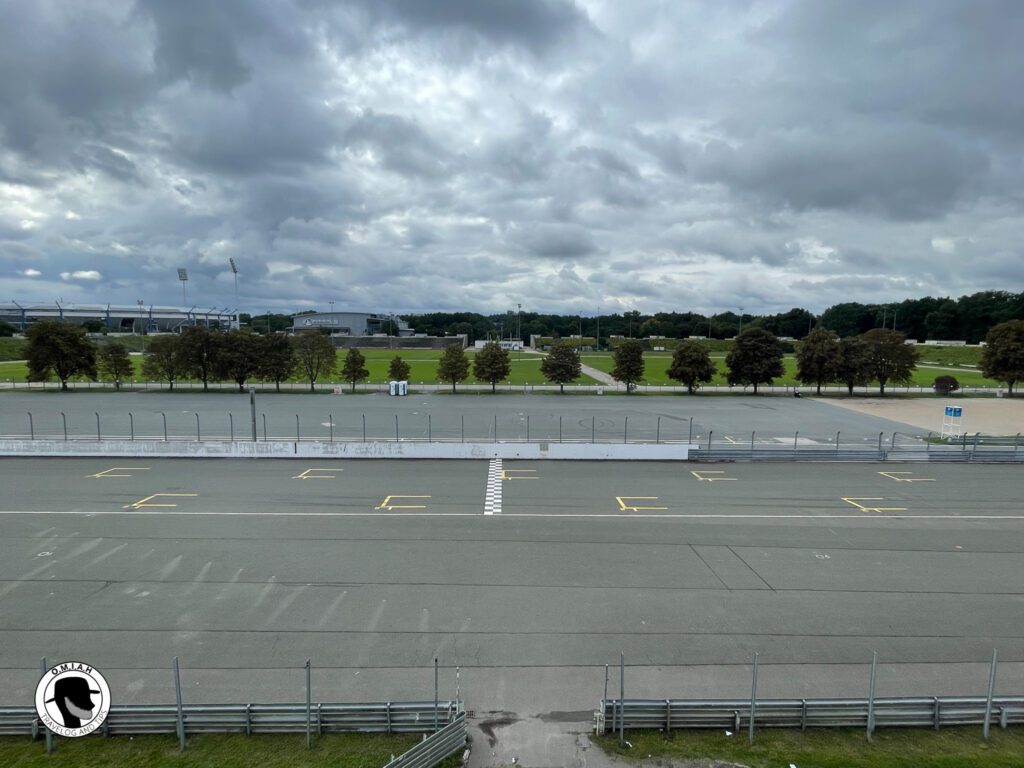

Nuremburg was a great stop. There is a lot I didn’t get to, whether it’s hitting the museums, visiting the churches, or doing one of the tunnel tours. And it was the wrong month to visit the Christmas market. Merely things to add to the agenda for the next time I’m in town.
Until next time.
Travel well. Pursue experiences.
O.M.I.A.H
